|
|
|||||||||||||||||||||||||||||||
|
Forgotten Temples of Kashmir
Photo series Part-2 An effort to preserve and record Hindu cultural and religios heritage of Kashmir BALA DEVI OF VILLAGE BALHAMA 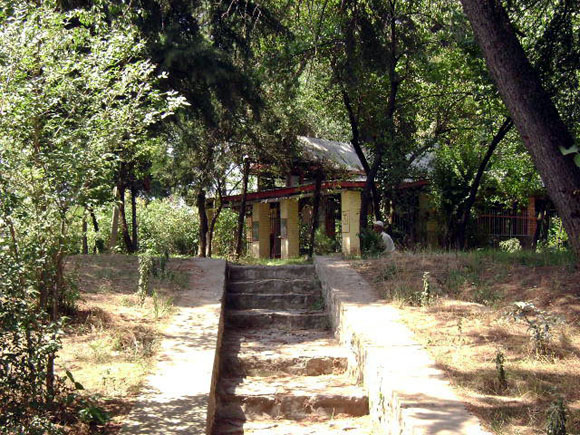 Exclusive images and report from a remote village in Kashmir provided for Shehjar by Chander M. Bhat |
|||||||||||||||||||||||||||||||
|
Bala
is a Sanskrit word meaning ‘the girl child.’ Worship of Sakti or the
Mother Goddess is a very ancient practice in India. Of the several
aspects of the Divine Mother Parvati, Lalita or Lalita-Tripurasundari is
very important and popular. Bala (also called Bala-Tripurasundari) is
an aspect of this Lalita. Sometimes she is described as the daughter of
Lalita who helped her to destroy the army of the demon Bhandasura.
As her very name suggests, Bala is pictured as an eternal girl of nine years. Iconographical works describe her as red in colour like hibiscus flower. She has four arms carrying sosary, noose, goad and book. Bala is specially worshipped, by those desiring psychic powers.” [A Concise Encyclopedia of Hinduism by Swami Harshananda] The abode of Bala Devi in Kashmir valley is at Village Balhama which is about thirteen kilometers from Srinagar. This village is surrounded by village Wuyan in the east, Khunmoh in the north and Pampore town in the west. This village is about 3 km on the right side near Pantha Chowk, a link road near Pampore Joinery Mill. According to the local folk lore the original abode of Bala Devi is in South India. It is said that the saint of the temple had a dream in which she told him to visit Kashmir where he could have her darshana. The saint along with his devotees as per the divine blessings visited the village of Balahama which was a dense forest at that time. The goddess gave darshana to the saint in a spring. In order to keep the sanctity of the shrine she directed him to plant five saplings of Devdar trees around the spring which in the course of time grew to full size Devdars. The five Devdar trees are believed to be more than five thousand years old and is the principle object of veneration. The spring in later years faded away under the trunk/girth of Deodars.
Thirty Kanals of land is attached to Bala Devi temple and the temple has been built in the right side of the plot/land facing towards east. There is a small hut having only one room which is believed to be the residence of the Chowkidar. The temple has been built by constructing a circular brick pillars covering the five Devdar trees and thereby joining the pillars by steel fencing. At present there are five Hindu families who are looking after the temple. A local namely Gh. Qadir has been engaged as the Chowkidar by the local Pandits on Rs. 600/- as monthly remuneration. At present the temple is having a deserted look due to lack of maintenance and proper care due to forced migration of Pandit families from this village. |
|||||||||||||||||||||||||||||||
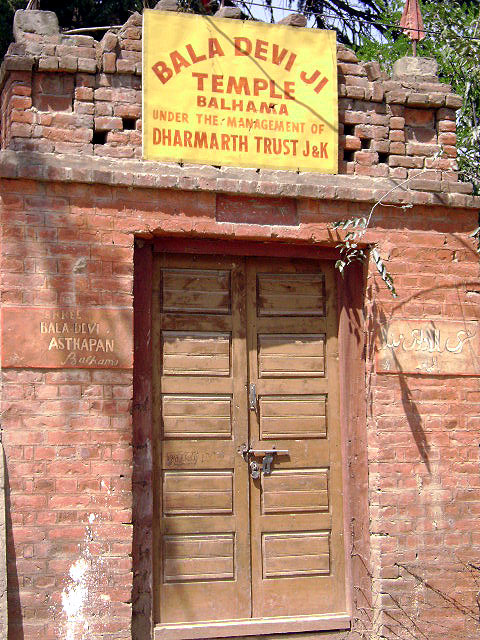 Main entrance of the temple |
|||||||||||||||||||||||||||||||
|
Icons near the gate |
|||||||||||||||||||||||||||||||
 Inner View of the hall |
|||||||||||||||||||||||||||||||
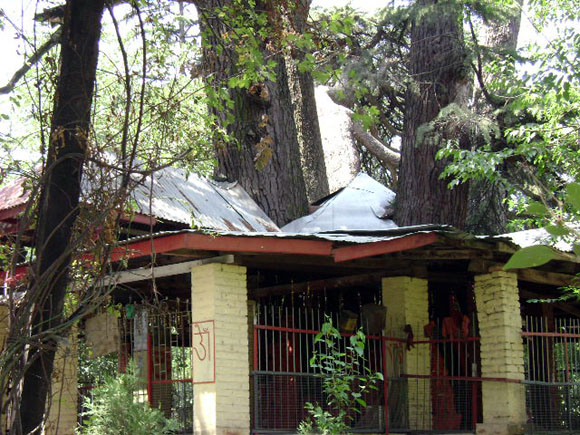 Five deodar Trees inside the temple |
|||||||||||||||||||||||||||||||
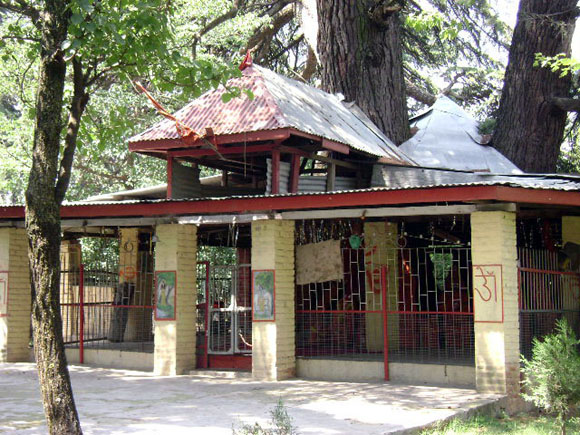 Deserted Temple Building |
|||||||||||||||||||||||||||||||
|
Icons of faith now unattended |
|||||||||||||||||||||||||||||||
|
|
|||||||||||||||||||||||||||||||
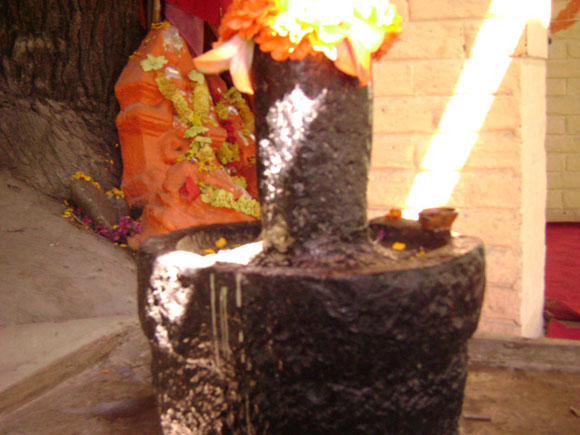 Shiv Lingam inside temple |
|||||||||||||||||||||||||||||||
 Top of the Deodar which was once source of cool shade for Kashmiri hindus |
|||||||||||||||||||||||||||||||
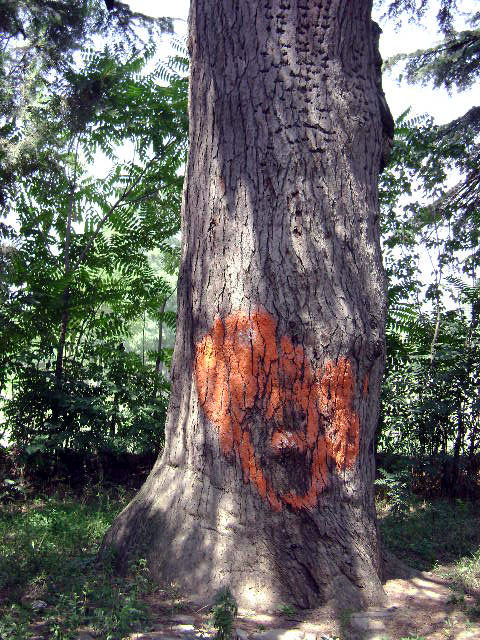 A big Deodar at the Southwest corner of the temple |
|||||||||||||||||||||||||||||||
|
|
|||||||||||||||||||||||||||||||
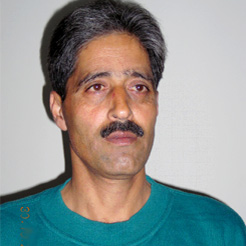 *Born
on 20th March, 1960 in Murran a village in North Kashmir, Chander M.
Bhat is presently working as an Assistant Supdt. Posts, in Department of
Posts, Govt. of India. His articles regarding Posts and of
non-political nature stand widely published in various papers and
magazines of the country. A booklet “How to Collect Stamps” published by
the Department of Posts, has earned him genuine accolades. He worked on
the project of tracing the roots of his co-villagers and of the village
Murran, resulting into the culmination of a widely acclaimed book
“Murran …My Village”. Man with depth, Chander M. Bhat has also another
book, “Ocean by Drops” (collection of poems) in his vase having colorful
poems. His book “Ancient History of Jammu and Kashmir”, confirms his
researching capability. Various research papers like “The Splendor that
is Amarnath” and “Vitasta…The Sacred River of Kashmir” are valuable
additions to his works that has proved very fruitful and guiding force
in the exile period of Kashmiri Pandits community of which the author is
also a member. *Born
on 20th March, 1960 in Murran a village in North Kashmir, Chander M.
Bhat is presently working as an Assistant Supdt. Posts, in Department of
Posts, Govt. of India. His articles regarding Posts and of
non-political nature stand widely published in various papers and
magazines of the country. A booklet “How to Collect Stamps” published by
the Department of Posts, has earned him genuine accolades. He worked on
the project of tracing the roots of his co-villagers and of the village
Murran, resulting into the culmination of a widely acclaimed book
“Murran …My Village”. Man with depth, Chander M. Bhat has also another
book, “Ocean by Drops” (collection of poems) in his vase having colorful
poems. His book “Ancient History of Jammu and Kashmir”, confirms his
researching capability. Various research papers like “The Splendor that
is Amarnath” and “Vitasta…The Sacred River of Kashmir” are valuable
additions to his works that has proved very fruitful and guiding force
in the exile period of Kashmiri Pandits community of which the author is
also a member.Presently the author is working on “OOL…THE NEST” a six volume project on all the 595 [each volume of about 2500 pages] Kashmiri Pandit villages of Kashmir. By shri chander M Bhat............................................................Posted by : vipul Koul Edited by : Ashok Koul.. | |||||||||||||||||||||||||||||||
Monday, June 4, 2012
BALA DEVI OF VILLAGE BALHAMA
Subscribe to:
Post Comments (Atom)


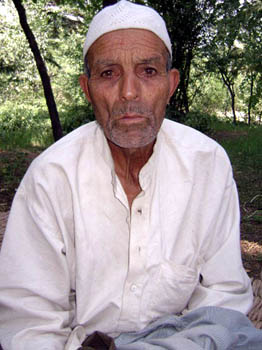
Thanks for writing this blog, You may also like the Bala Homa
ReplyDelete